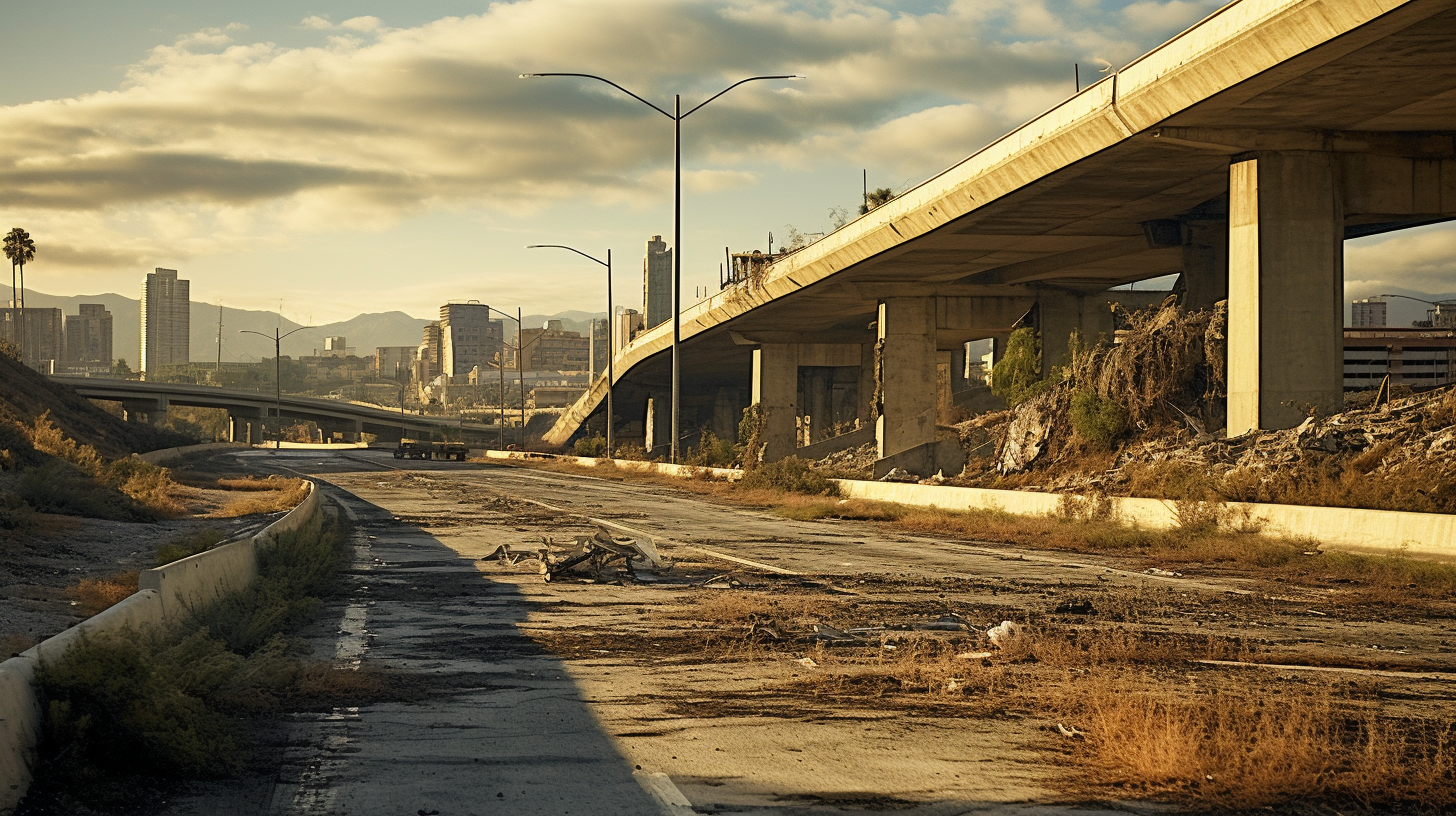In the shadow of looming concrete giants, a cacophony once roared–the symphony of rubber on asphalt, the reverberating baseline of the internal combustion engine. How swiftly the silence settled over these erstwhile veins of our civilization when the currents of progress ebbed away, leaving behind the freeways of the past. But it is in this silent desolation that we find the focus of our narrative–a tale contrasting industrial collapse against the vibrant resurgence of an unintended wilderness.
Where rubber cedes to root, the rhythm of the natural world harmoniously rises. Our journey today meanders through these concrete corridors, repurposed not by design, but by the indomitable force of nature reclaiming her domain. Eerily reminiscent of the stories we teased in ‘Jungle Metropolis’ and ‘Whispers of the Wasteland,’ these freeways have now been infused with life’s tenacious grasp–a living mosaic pieced together in the cracks of a world we once thought permanent.
Vivid imagery fills the air, as the songbirds have replaced sirens, making their homes amongst the sprawling vines that now drape over forgotten guardrails. Blue jays and cardinals resound through the erstwhile stillness, their melodies a stark contrast to the silent machinery rusting beneath. The reader can almost hear the soft humming of bees, busy at work pollinating the robust growth of wildflowers, flourishing where exhaust once lingered and tires left their mark.
But our story does not stop at marveling at these verdant vistas. We push forward, examining how these transformed highways serve as a lens through which to examine the mistakes of our ancestors and to understand the potential paths that lie untrodden by human feet. In the spirit of our previous piece ‘Asphalt Meadows – When Highways Revert to Nature,’ we delve deeper into the nuances of ecological succession, a process now unfolding before our very eyes. Abandoned not by choice, but by necessity, these spaces now speak more of the future than they do of the past.
Indeed, this conversation extends beyond flora and fauna. It reflects on us, on society’s relationship with the environment, and on the sobering acknowledgement that civilization’s grandeur may indeed be as transient as the ephemeral bloom of springtime. The freeways, once the lifeline of economies and the emblem of advancement, now sing disjointed elegies for a time when humanity gripped the wheel with the confidence that the journey would never end.
This is no ballad of redemption; it is a stark reminder of the legacy we forge through negligence and the resilience that nature exhibits, even after the crescendo of human ambition fades into a disquieting diminuendo. The reader is left to contemplate the symphonic score of nature, which plays on stubbornly, indifferent to the absence of its once dominant conductors.
In concluding this exploration of ecological juxtaposition, the article invites its audience to gaze upon these scenes not as relics of loss, but as beacons of what could rise from the ashes of disregard. As the article navigates the highways-turned-habitats, it teases out the melodies of ponds replacing potholes, of thickets where lanes once lay, and of the greenery that now colors these landscapes with hues of redemption–despite the detritus left behind by runaway consumption.
Discover with us the ‘Echoes of the Lost Currents,’ a requiem for the freeways past and an unintended testament to the incredible adaptability of our planet. Join us on this voyage, an observation deck for witnessing the quiet resurgence of an Earth that, despite all, hums vibrantly forward.
